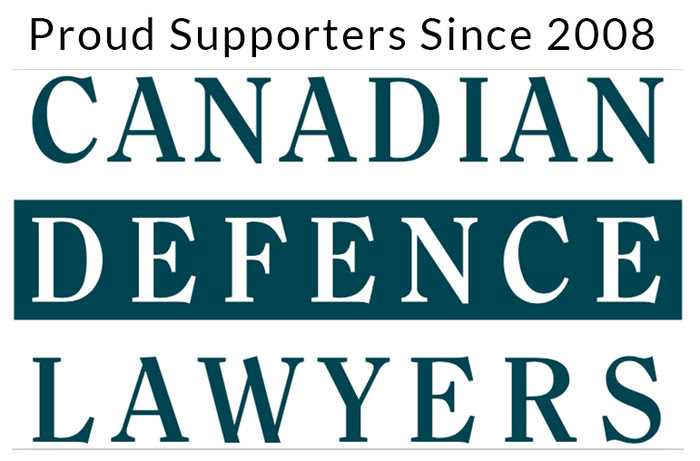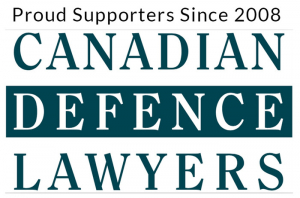Picture this—you’re the owner/operator of a hiking tour company. One of your customers has been badly injured on a hike, and he intends to sue you. Will the liability waiver you had him sign prior to embarking on the hike hold up in court?
Liability waivers are essential for any business that offers the public access to risky or potentially risky activities.
In the outdoor/adventure industry, waivers are designed to protect the owners/organizers of an activity from being responsible when a customer gets injured, either through his or her own actions or through the negligence of the owner/organizer.
Properly drafted, a liability waiver is a contract that prevents the person who signed it from taking legal action and suing the owner/organizer for personal injury. Most often, these waivers are required as a precondition of participating in an activity.
When liability waivers are challenged before the courts, they are sometimes found to be unenforceable.
This is because courts are generally loath to uphold them, as they allow a party to avoid responsibility for its negligent acts. As a result, courts will often find that a waiver is invalid, unless it is properly drafted and has been signed in proper circumstances.
Drafting a liability waiver
A key component of a liability waiver is the exclusion clause, which is designed to absolve you of liability if your customer gets injured.
One of the leading cases in Canada on the applicability of liability waivers is from the Supreme Court of Canada in a case called Tercon Contractors Ltd. v. British Columbia (Transportation and Highways), 2010 SCC 4.
There, the court set out three considerations:
- As a matter of ordinary contractual interpretation, does the exclusion clause apply to the circumstances established in the evidence?
- If so, was the exclusion clause unconscionable at the time the contract was made?
- If the clause is valid and applicable, should the court decline to enforce it because of an overriding public policy concern that outweighs the very strong public interest in the enforcement of contracts?
In other words, is the thing being sued over something that the liability waver specifically contemplated and sought to release? Are there any circumstances surrounding the signing of the liability waiver (or in the waiver itself) that would make it extremely unfair on the injured person to release (i.e. did the person know what they were signing)? And are there any greater societal values that are more important to protect instead of the certainty that comes from honouring properly signed contracts?
Other important considerations are how clearly written a waiver is, whether key details are appropriately highlighted and if the waiver is designed to cover multiple events over multiple days, or just one event.
It is helpful to look at court cases where liability waivers have been upheld to guide best practices and ensure your waiver stands the greatest chance of being found valid and enforceable if you are ever faced with a court action. Below, we have summarized three cases out of British Columbia that help illustrate the different sorts of liability waivers and circumstances where such documents have been upheld.
Jamieson v. Whistler Mountain Resort Limited Partnership and Gravity Logic Inc., 2017 BCSC 1001
This is a 2017 decision from the BC Supreme Court where a user of the Whistler Mountain Bike Park was prevented from suing the resort after his accident on a park feature left him with spinal cord injuries and in a wheelchair.
Like all mountain bike park patrons, the individual had signed a waiver titled the “Whistler Blackcomb Mountain Biking Waiver of Claims Assumption of Risk and Indemnity Agreement Release,” which was four 8.5×11-inch pages and included sections that were specifically outlined in red and highlighted in yellow.
In addition to this paper waiver, the mountain bike park had signs at entry/exit points that had “STOP—READ THIS!” written at the top with waiver language below, and at the beginning of the specific trail where the individual had his accident, a sign noted that it was an advanced trail and that riders should not proceed if they had experienced difficulty riding up to that point.
When the judge in this case looked at the wording in the liability waiver, she found that it was comprehensive, clear and blunt, and addressed the circumstances of the rider’s accident.
Relevant features of the waiver included the text content itself, that important sections of it were framed, highlighted in yellow and/or were in bold/italics and in all capitals, that sections of the waiver required the rider to initial (confirming they had been advised to read the release), and that the release was written in understandable plain language. As such, she found that the injured rider knew and understood the impact of his signing the waiver, and thus the release of liability was valid and enforceable against him.
Loychk v. Cougar Mountain Adventure Ltd., 2012 BCCA 122*
Even when it is clear that a company’s negligence caused an accident (as opposed to it being the customer’s fault), it may be possible for the company to rely on a waiver and defeat a claim for resulting injuries. This is what happened in 2012 with a Whistler zip-line company.
In Loychk v. Cougar Mountain Adventure Ltd., a zip-line participant was injured when she stalled mid-line and a zip-line guide sent another user down the line, causing them to collide. Miscommunication between the zip-line guides was the sole cause of the accident and, therefore, the participant’s injuries.
The injured participant had signed a waiver that very clearly stated (in either bold or all capital letters): “By signing this document you will waive certain legal rights, including the right to sue or claim compensation following an accident.”
The judge found that the participant had been given sufficient time to read the document, Cougar Mountain had taken sufficient steps to bring the release to her attention and she had signed it. The judge further found that there was nothing in the circumstances that would have led the zip-line company to conclude that she did not agree with what she had signed.
Cooper v. Blackwell, 2017 BCSC 1991
Finally, in another 2017 decision, the BC Supreme Court had to determine the extent to which a liability waiver could survive over time and apply to subsequent activities.
In Cooper v Blackwell, a hunter paid for a grizzly bear hunting trip in 2013 and signed a liability waiver. The hunt was unsuccessful and, as a result, his guide took him out again in 2014 free of charge.
The hunter did not sign any waiver for the 2014 hunt. The guide obtained a new hunting licence and tags for the 2014 hunt and invoiced the hunter, indicating there was no balance due for the second trip but that there would be a $1,000 royalty if the hunt was successful.
During the 2014 hunt, a guide fatally shot the hunter by accident. The guide was sued, and at issue was whether the liability waiver signed for the first hunting trip extended and applied to the second hunting trip such that the guide was not liable.
While the judge did comment that the language of the waiver contained confusing syntax and grammar that did not make it clear whether the guide would be released from all liability, this ultimately did not decide the case. Rather, the judge found that when the waiver was signed, only one guided excursion (the 2013 one) was anticipated; the 2014 trip was a separate and distinct trip not contemplated in any way when the hunter signed the liability waiver.
As such, while liability waivers can and do extend over multiple events on multiple days, the waiver must be clearly drafted to apply to such situations. The hunter’s waiver was not, thus the guide could not rely on it to defeat the lawsuit.
UPDATED: March 6, 2020
Apps v. Grouse Mountain Resorts Ltd., 2019 BCSC 855, 2020 BCCA 78
In this recent 2019 decision, a snowboarder suffered catastrophic injuries after falling in the snowboard terrain park on Grouse Mountain. He brought a claim alleging that Grouse’s jumps were too dangerous, that the ski resort was negligent in designing the terrain park, and that it did not sufficiently warn the public about the potential risk for serious injury. The case turned on the question of whether it would be fair in the circumstances to hold the plaintiff to Grouse’s waiver; this in turn depended on the efficacy of the notice given by Grouse.
This was an example of the subset of waiver cases known as “ticket cases” – the individual did not sign an actual waiver document, but the waiver language was presented to him through various means. Prior cases have made clear that, while there are factual distinctions between the situations, the principles of law are the same.
For a detailed discussion about the Apps case and the decision of the Court of Appeal, please read our latest blog post. [hyperlink to Apps blog post]
Key takeaways for outdoor/adventure businesses
If you’re the operator of an outdoor/adventure sporting activity, having a valid and properly executed waiver of liability is essential to protecting you from costly and time-consuming litigation.
Ryan Morasiewicz [hyperlink to firm bio] has extensive experience drafting liability waivers for all sectors of the outdoor/adventure industry. He is also one of very few lawyers whose waivers are accepted by major insurers and insurance brokers active in the industry. We would welcome a chance to talk with you about your operations and how we could help you take your company to the next level.
Note: This article is of a general nature only and is not exhaustive of all possible legal rights or remedies. In addition, laws may change over time and should be interpreted only in the context of particular circumstances such that these materials are not intended to be relied upon or taken as legal advice or opinion. Readers should consult a legal professional for specific advice in any particular situation.
*Max Hufton was counsel for the Defendants before the Court of Appeal that successfully upheld the liability waiver in question.







